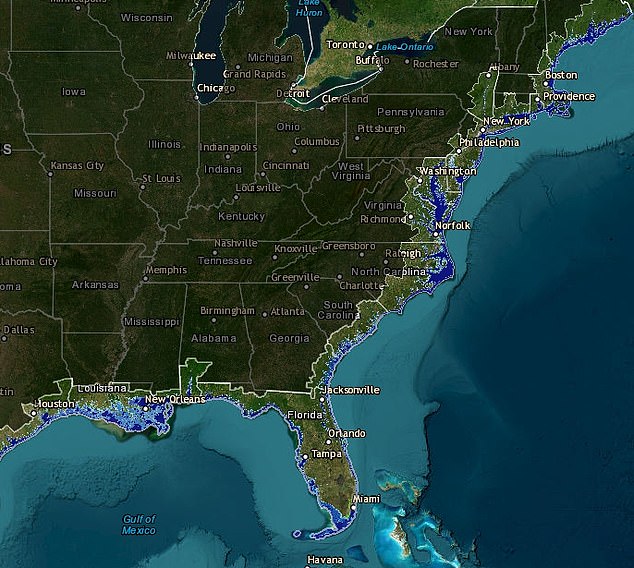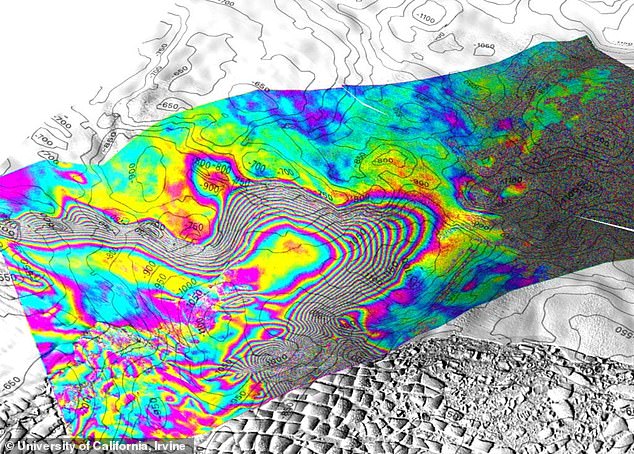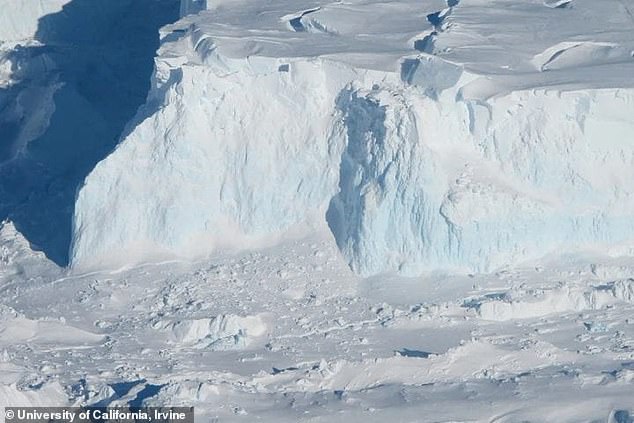Antarctica’s ‘Doomsday Glacier’, nicknamed for its ability to raise sea levels by almost two feet, is breaking up ‘much faster’ than previously believed.
Formally known as Thwaites Glacier, researchers at the University of California (UC) discovered that warm seawater flows miles beneath it, causing “vigorous melting.”
The team used satellites and radar technology to track changes in surface elevation and found that water had raised parts of the glacier about seven miles.
The findings could require a reassessment of global sea level rise projections, as researchers have predicted that Thwaites could retreat up to two miles each year under the intrusion of warm seawater.
Antarctica’s ‘Doomsday Glacier’, nicknamed for its ability to raise sea levels by almost two feet, is breaking up ‘much faster’ than previously believed.
Co-author Christine Dow, a professor at the School of Environment at the University of Waterloo in Ontario, Canada, said in a statement: “Thwaites is the most unstable place in Antarctica and contains the equivalent of 60 centimeters (1.9 feet) of sea. level rise.
“The concern is that we are underestimating the speed at which the glacier is changing, which would be devastating for coastal communities around the world.”
Data from the National Oceanic and Atmospheric Administration shows that an excess of two feet in sea level would submerge many of America’s coastal cities, including Miami, New York and New Orleans.
The team used data collected from March to June 2023 by Finland’s ICEYE commercial satellite mission, which showed the rise, fall and curvature of the Thwaites Glacier.
Senior author Eric Rignot, professor of Earth system science, said: “These ICEYE data provided a series of long-term daily observations that fit closely to tidal cycles.
“In the past, we had some sporadic data and with just those few observations it was difficult to know what was happening.
“When we have a continuous time series and compare it to the tidal cycle, we see that seawater comes in during high tide and recedes and sometimes rises further below the glacier and gets trapped.”

Data from the National Oceanic and Atmospheric Administration shows that an excess of two feet in sea level would submerge many of America’s coastal cities, including Miami, New York and New Orleans.

The team used satellites and radar technology to track changes in surface elevation and found that water had raised parts of the glacier about seven miles. Satellite images (pictured) captured warm seawater flowing under the glacier like a tide coming in and out.
The team determined that seawater was coming in from the base of the ice sheet and, combined with freshwater generated by geothermal flow and friction, it builds up and “has to flow somewhere.”
The water is then distributed through natural conduits or collected in cavities, creating enough pressure to lift the ice sheet.
“There are places where the water has almost the same pressure as the ice covering it, so it only takes a little more pressure to push the ice up,” Professor Rignot said.
“The water is then compressed enough to lift a column of more than half a mile of ice.”
Researchers have been monitoring the impact of climate change on ocean currents for decades and have found evidence that warmer seawater is being pushed toward the coasts of Antarctica and other polar regions.
West Antarctica, where the ‘Doomsday Glacier’ is located, has specifically experienced warming over the past 50 years.
Previous studies have found that rising temperatures are warming the oceans, making them less cold and less likely to sink.
Without sinking into cold water, ocean currents can slow or stop in one place, which could explain why warmer seawater doesn’t move quickly across Antarctica.


